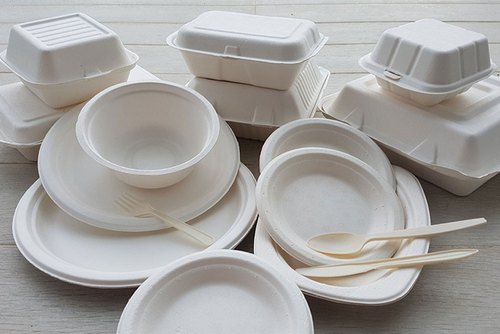Project Report For Bagasse Plates Manufacturing
Introduction
Project report for Bagasse Plates Manufacturing is as follows.
The Bagasse Plates that remains after the cane is turned into sugar is known as bagasse. It’s classified as a waste product, which means it doesn’t take any extra resources to manufacture, yet it creates the greatest throwaway plates on the planet. Bagasse plates and bowls are used to make Bio Green Choice plates and bowls.
Environmentally conscious these bagasse plates, unlike foam or plastic, do not affect the environment.
Project Report Sample On Bagasse
Plates Manufacturing
Get Completely Custom Bankable Project Report
By 2029, the bagasse plates market is anticipated to be worth $322 million. Tableware manufactured from sugarcane bagasse has been shown to be very sanitary.
Ecoware, a USDA-certified bio-based tableware manufacturer, is expanding its product line to include sugarcane bagasse biodegradable dinnerware.
Bagasse materials are popular for food packaging because of their recyclable, lightweight, and distinctive characteristics.
The bagasse plates market is expected to grow from 1,939 million units in 2021 to 2,990 million units in 2029. Bagasse is becoming more popular as a food packaging material.

Bagasse plates, despite its excellent tolerance to both hot and cold temperatures, has been discovered to lose part of its strength when used to keep meals hotter than 95 degrees Celsius. As a result, bagasse plates have a lower carbon footprint than traditional polystyrene plates.
This helps to overcome the limitations of bagasse plates, as otherwise, bagasse is acceptable for packing food with low temperatures.
Market Potential Of Bagasse Plates Manufacturing
Expenses

Product Cost Breakup

Reveneue Vs Expenses

Market Trend

During the projected period, the bagasse plates market is expected to grow at a CAGR of 6.7 percent in terms of value. Compostable dinnerware is being used to replace disposable plastic plates. This is expected to increase demand for bagasse plates, which lose their form entirely after 60 days in the ground.
Bagasse plates, biodegradable disposable plates, and green tableware are being used by environmentally aware customers at weddings, social events, and parties to decrease the quantity of bulk garbage collected.
The company in the bagasse plates sector, is gaining popularity for its 100% compostable and biodegradable tableware that lets people dine safely. Bagasse plates have been proved to be more durable than traditional paper plates.
Bagasse is becoming more popular as a material for dinnerware. Bagasse dinnerware is more eco-friendly and sustainable than other materials since it can be composted easily.
Bagasse plates makers are benefiting from these developments since bagasse has a longer lifetime than other materials and can be used to construct a variety of biodegradable plates, mugs, and boxes, among other things.
